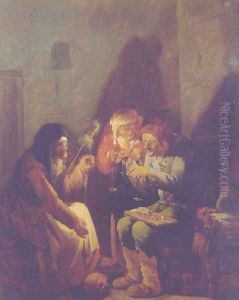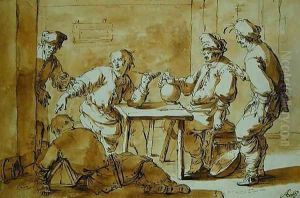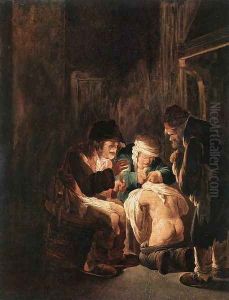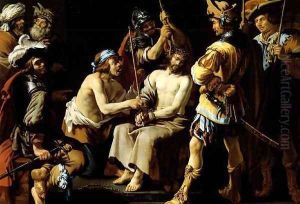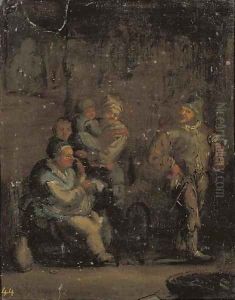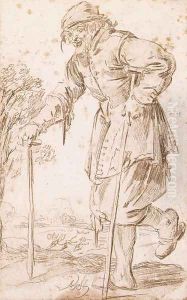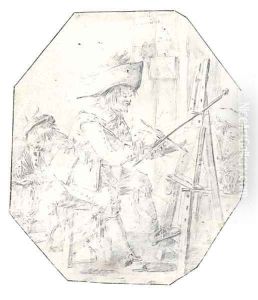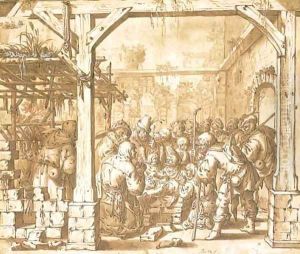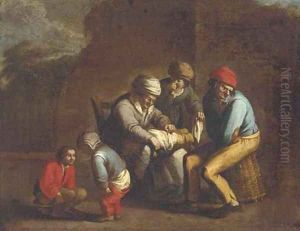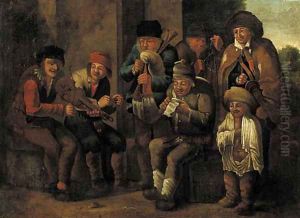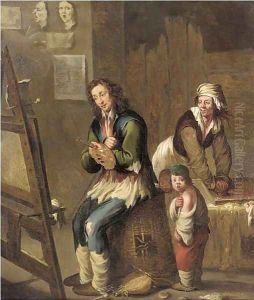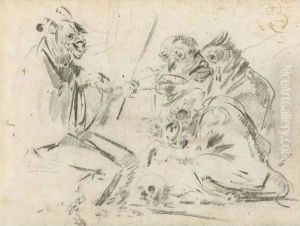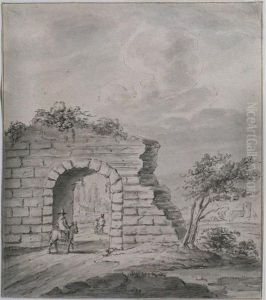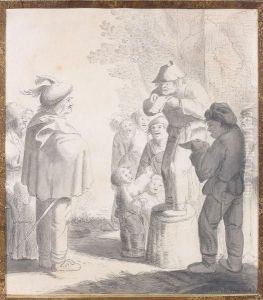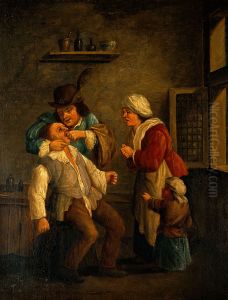Andries Both Paintings
Andries Both was a Dutch Golden Age genre painter known for his vivid depictions of daily life in the 17th century Netherlands as well as his innovative use of light and shadow, which reflected the influence of Caravaggio. Born in Utrecht into an artistic family, his father was a glass painter and his brother Jan Both would also become a notable landscape artist. This environment nurtured his talents from an early age, laying the groundwork for his artistic career.
Both initially trained under his father, and later, he studied under the Utrecht painter Abraham Bloemaert. Bloemaert, known for his historical and religious paintings, was a significant figure in the Utrecht school of painting, which was renowned for its embrace of Caravaggisti style, characterized by dramatic use of light and shadow. Andries Both, along with his brother Jan, traveled to Rome in the early 1630s, a journey that was common among artists of the time seeking to study the Italian masters.
In Rome, Andries became part of the Bentvueghels, a society of predominantly Dutch and Flemish artists living in Rome, known for their bohemian lifestyle and dedication to creating art that reflected their direct observations of life. It was during this period that Both developed his genre painting style, often depicting scenes of everyday life with a humorous or moralizing tone. His works from this period show a keen observation of light, shadow, and atmosphere, clearly influenced by the Caravaggisti style he was exposed to in Utrecht and further developed in Italy.
Tragically, Andries Both's life and career were cut short when he drowned in a canal in Venice in 1642 while returning from a trip to Italy. Despite his premature death, Both left behind a significant body of work that has contributed to our understanding of genre painting in the Dutch Golden Age. His paintings are celebrated for their lively depiction of everyday scenes, technical skill, and innovative use of lighting, securing his legacy as an important figure in the history of Dutch art.
